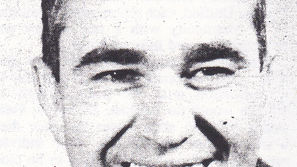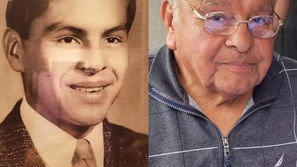Young bride’s honeymoon was a trying time
- Bill Coate
- Dec 23, 2020
- 4 min read

For The Madera Tribune
This portrait of Jennie Mace, taken circa 1900, reflects the strength of character that sustained her in her journey from the wilds of the hill country around O’Neals to civilized life in Madera.
Madera County was a proving ground for pioneers. No phase of the westward movement is missing from its history. The explorers, trappers, miners, ranchers, and farmers all marched into this area to play their roles in bringing the American frontier experience to a close. As they did so, some left such indelible marks that they will never be forgotten.
It is not surprising that of those early pioneers whose memories have been preserved, most are men. A recitation of the male dominance in 19th century politics and economics would only be a needless elaboration of the obvious. It was, at least on the surface, a man’s world.
The current focus, however, of the American frontier experience has broadened its scope, and the behind-the-scenes experiences of American pioneer women are attracting the interest of historians. What is being revealed is not surprising. Women played a role in taming the West far out of proportion to the recognition they have received, and one Madera County pioneer woman provides a perfect example — Jennie Cunningham Gilmore Mace.
Captain Russel Perry Mace is not an unfamiliar figure in local history. His exploits on the Santa Fe Trail, in the Mexican/American War, the gold rush, and the creation of Madera County have been chronicled by adults and children alike. But what about Mrs. Mace? What was her story?
Jennie started out for what is now Madera County in 1855. This was her honeymoon. Leaving their Indiana home, she and her new husband, John W. Gilmore, were coming to California via the Isthmus of Panama. It was June, and the trip from New York to Aspinwall had been uneventful. She had not been too seasick, and she looked forward to boarding the ship on the Pacific side to sail on to San Francisco and thence to the land of Ophir.
After remaining overnight in Aspinwall, Jennie and John took the train across the Isthmus to the Pacific side. The young couple hired a “native” to transport them in a skiff to the San Francisco bound streamer, which lay at anchor five miles from shore. Since these natives were paid by the passengers, they were reluctant to take off without a full boat. Jennie thought their boatman to be quite “ugly” both in physical features and temperament.
The sea was rough on the day of their departure, and as the skiff was rowed away from shore, it was “caught by a heavy wave and thrown against a pier.” Jennie, with the other passengers, dove for the bottom of the boat. In the tangle of humanity on the deck of the skiff were two women, three men, and two children.
After that narrow escape, the native had second thoughts about continuing the shuttle to the steamer. The California bound pioneers, on the other hand, were determined. They drew their pistols and threatened to kill the boatman if he did not take them immediately to the steamer. The oarsman defused the situation by promptly jumping overboard. Jennie and her party transferred to another skiff and finally reached the steamer in safety.
On June 17, 1855, 18 year-old Jennie Gilmore, a bride for just one month, having left mother, father, brothers, and a sister in Indiana, finally arrived in San Francisco. The town had just experienced one of its periodic conflagrations and lay in ashes. Most of the inhabitants were dwelling in tents. What must have been the young girl’s thoughts as she prepared to travel inland?
A riverboat carried John and Jennie to Stockton where they transferred to “a prairie schooner.” For three weeks she was jostled and jolted, as the wagon made its way from the lower San Joaquin River to Finegold Gulch, not far from present day Coarsegold. John had it in his mind to strike it rich in that part of the Southern Mother Lode, which extended into what is now Madera County. As for Jennie, she intended to support her husband.
In her journal she recorded that Finegold Gulch “was a lively camp; tents dotted the banks all up and down, mostly Chinese.” The young woman described the “mining excitement” with awe.
Having arrived in the present day Madera County foothills, the next order of business was to erect living quarters. While the “picket” cabin with a canvas roof and dirt floor was being constructed, Jennie and John lived “under a tree along Finegold Creek.” She was very much relieved when the walls were finally up, not so much for comfort as for protection.
To attempt permanent settlement in what is now the Coarsegold — North Fork — and O’Neals area of Madera County during the 1850s was risky business. Jennie was in constant fear of Indian attack. Of the indigenous population of the Madera County foothills, she wrote, “They often travel in large bands, passing back and forth between the mountains and the plains where they are in search of food....” On one occasion, Jennie estimated that one migrating group exceeded 500.
With husband John washing dirt up and down Finegold Creek, it was often necessary for Jennie to be left alone for long periods of time. On one occasion an Indian Chief, “who had too much liquor, came on the place and wanted to come in the house, but with a gun poked through one of the port holes, he was persuaded to leave.”
Jennie survived the trip to California and those first few months on Finegold Creek. She went on to make her own mark on Madera County, but never forgot those teenage years in which she endured her honeymoon on the frontier.
We will follow her out of the mountains and into Madera next time.


























Comments